
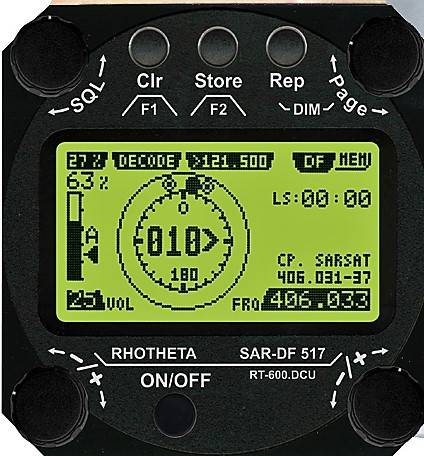
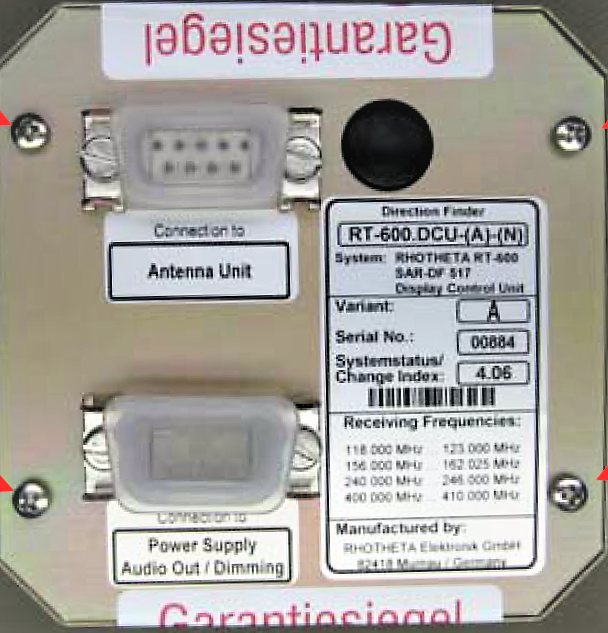
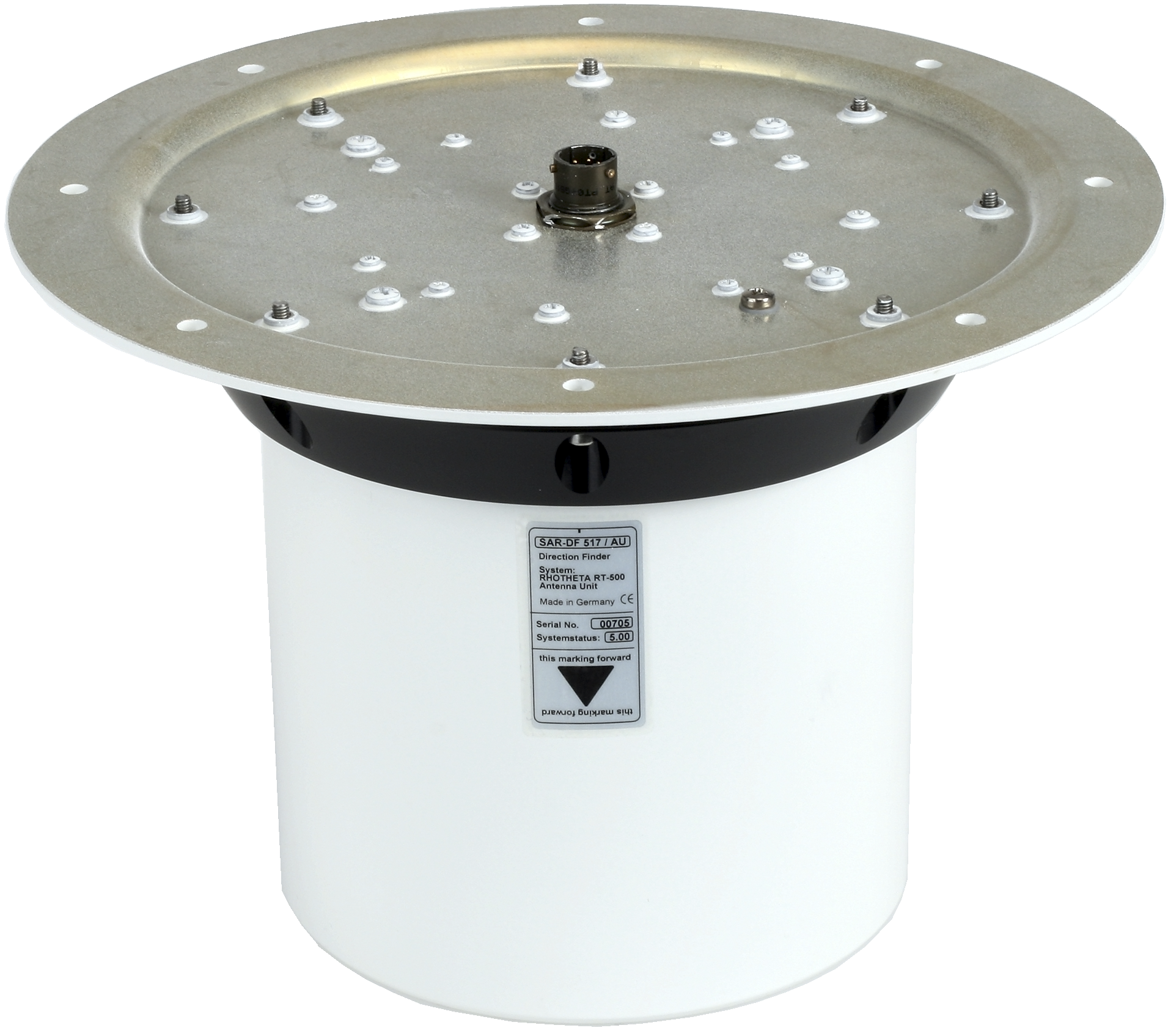
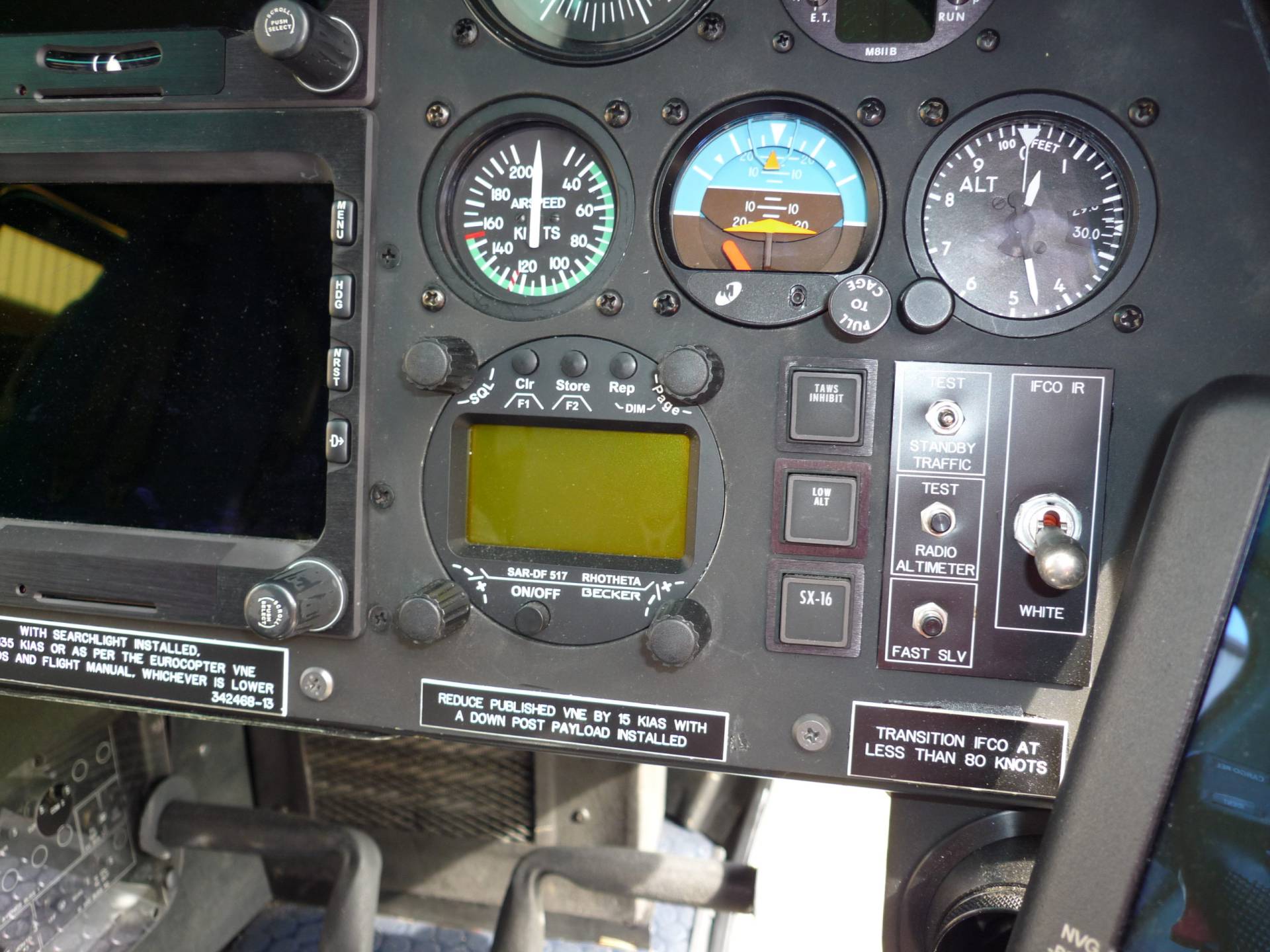
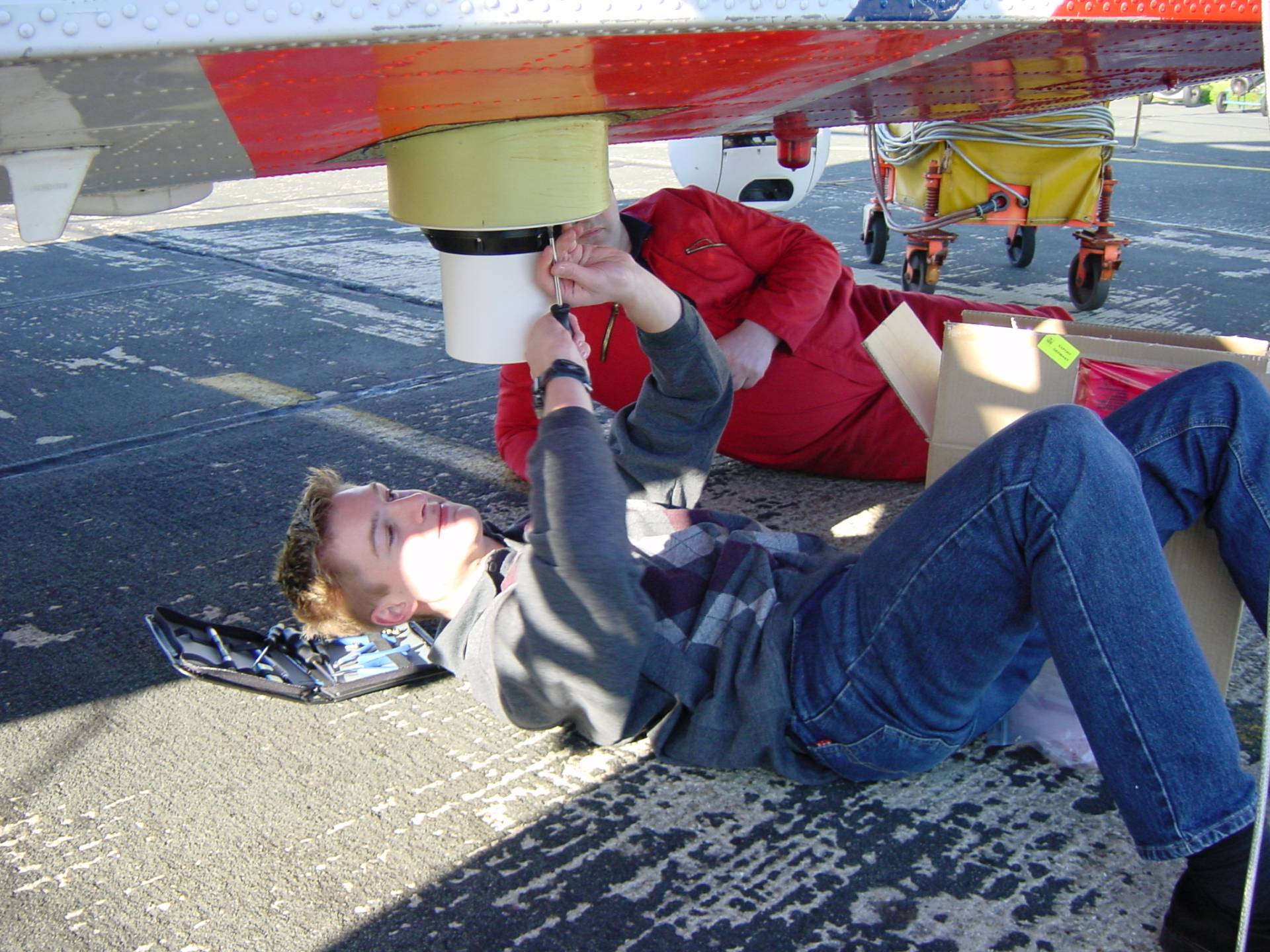






RT-600-A
Advanced Wide-band Radio Direction Finder System for Airborne Applications
Key Facts:
- Modern and advanced wideband direction finding system for airborne applications
- Easy installation, no RF cable connection required
- Extremely compact and robust antenna system
- Short response time due to high antenna rotation frequency
- Auto-scan of all COSPAS-SARSAT channels within 400 ms
- Decoding/display of the COSPAS-SARSAT messages
- Fast scan function of complete marine ship band
Third Generation:
RT-600 WidebandSecond Generation:
RT-600First Generation:
RT-500 SAR-DF 517
Software Revision
Display Control Unit: 3.31
Antenna Unit: 3.33
Dates Active
2013 - Current
The RHOTHETA RT-600 A, also known as the STANDARD version, stands as a testament to advanced radio direction finding technology crafted for airborne applications. Primarily designed for search and rescue missions, this system offers expansive coverage of emergency signals across various frequencies. From VHF to UHF, marine channel 16, and every COSPAS/SARSAT channel, the RT-600 A ensures no distress call goes unnoticed.
Distinguished by its precision and efficiency, the device capitalizes on its patented wideband antenna and revolutionary bearing analysis algorithms. This combination delivers quick, steady, and reliable information to the user. For a more in-depth perspective, consider the Direction Finder (DF) mode. Here, depending on the type of signal received, operators can view a gamut of information, ranging from basic bearings from analog sweep-tones to intricate details from digital signals such as COSPAS-SARSAT. The unit further impresses with its ability to scan the entire COSPAS-SARSAT sub-band in less than 400 milliseconds, ensuring the detection of a signal within a single COSPAS-SARSAT repetition cycle.
Durability is another hallmark of the RT-600 A. Designed explicitly for the rigors of airborne operations, it can withstand harsh conditions, making it a reliable companion for any search and rescue mission. With its compact design, it remains suitable for both manned and unmanned aircraft, ensuring adaptability across a range of aerial platforms.
Features
Specifications
gallery
News & testimonials
downloads
COSPAS-SARSAT Ready
The RT-600 easily decodes of incoming COSPAS-SARSAT beacons messages. Users can track beacons in VHF by switching to 121.500 MHz while in COSPAS-SARSAT DF Mode, and if no valid signal is received, they can switch back to the last active COSPAS-SARSAT channel at 406 MHz. In COSPAS-SARSAT Scan Mode, the RT-600 scans manually selectable channels and stops at the received frequency, allowing for fast scanning of the complete sub-band and detection of receivable signals within one repetition cycle.


Seamless Integration with Mission Management System
The RT-600 radio direction finder can be integrated with augmented reality mapping systems for airborne law enforcement, search and rescue, and aerial firefighting missions. Real-time direction-finding information is exchanged for the tracking and locating of various transmitters like LoJack, ETS, medical beacons, and cash/asset recovery tags. This integration empowers flight crews with improved surveillance, intelligence gathering, and operational efficiency by visualizing and monitoring tracked signals in real time for better target identification and pursuit management.
NVG Option Available
The RT-600 offers an NVG (Night Vision Goggles) option that enhances operational capabilities for pilots in low-light or night-time conditions. With this option, pilots can effectively utilize the display control unit while wearing their night vision goggles. Pilots maintain clear visibility of the display and can easily access and interact with the system's controls and information, enabling safe and efficient operations even in dark environments. The NVG option provides an enhanced user experience and maximizes situational awareness during night flights, contributing to overall mission success and pilot safety.

Flexible Configurations for any Cockpit

CASE 1
DCU - Master Control via RS 485
smartDF Standard - Secondary Controller via RS232
Mission Management System- Listen Only via RS232

CASE 2
smartDF Pro - Master Controller via RS485
Adapter Box - DC & audio with RS232 option

CASE 3
Mission Management System- Master via RS485
Adapter Box - DC & audio with RS232 option
smartDF Standard - Listen via RS485
System Characteristics
Method of Bearing | Doppler principle (3 kHz rotational frequency, right/left rotation) | ||||||||||||
Bearing Accuracy | ≤5° RMS | ||||||||||||
Internal Resolution | 1° | ||||||||||||
Bearing Sensitivity |
| ||||||||||||
Frequency Stability | ±2.0 ppm | ||||||||||||
Reception Frequencies |
| ||||||||||||
Additional Frequency Options |
| ||||||||||||
COSPAS-SARSAT Fast Scan Mode | Full automatic detection of any active COSPAS-SARSAT channel A to S within 400 ms. | ||||||||||||
COSPAS-SARSAT Decoding | Reception and decoding of COSPAS-SARSAT data signal (112 to 144 bit), specified according to COSPAS-SARSAT C/S T.001 | ||||||||||||
Special Scanning Modes | Complete maritime ship band scanning within 5s | ||||||||||||
Bearable Modulation | A3E, F3E, A3X (ELT-modulation), F1D, G2D, COSPAS-SARSAT Bearing largely independent of modulation | ||||||||||||
Polarization | Vertical | ||||||||||||
Polarization Error | ≤5° at 60° field vector rotation | ||||||||||||
Garbling Cone | Ca. 30° to the vertical | ||||||||||||
Time of Response | ≤50 ms (with sufficient reception signal strength) | ||||||||||||
LC-Graphic Display | Resolution 128 x 64 pixel, background light, adjustable dimming | ||||||||||||
NVG Cockpit Design | Fully compatible NVIS Green B display Control Unit (optional) | ||||||||||||
Operating Voltage | 27.5 Nominal (Input voltage range 12 V DC to 35 V DC) | ||||||||||||
Current Consumption |
| ||||||||||||
Audio Signal / Analog Test (Service) Line | Max. output current = 50mA Output Voltage Range Max. [0 V DC … +5V DC] to GND | ||||||||||||
Audio Output | External speaker approx. 2 W (4 Ω) | ||||||||||||
Interface |
|
Mechanical Characteristics

Header | Display Control Unit | Antenna Unit |
|---|---|---|
Weight | 250 g | 2000 g |
Dimensions | 82 mm x 82 mm x 43 mm | Ø 270 mm x 185 mm |
Operating temperature | -20°C to +60°C | -40°C to +60°C |
Storage temperature | -30°C to +80°C | -55°C to +80°C |
Ingress protection | Cell | IP67 |









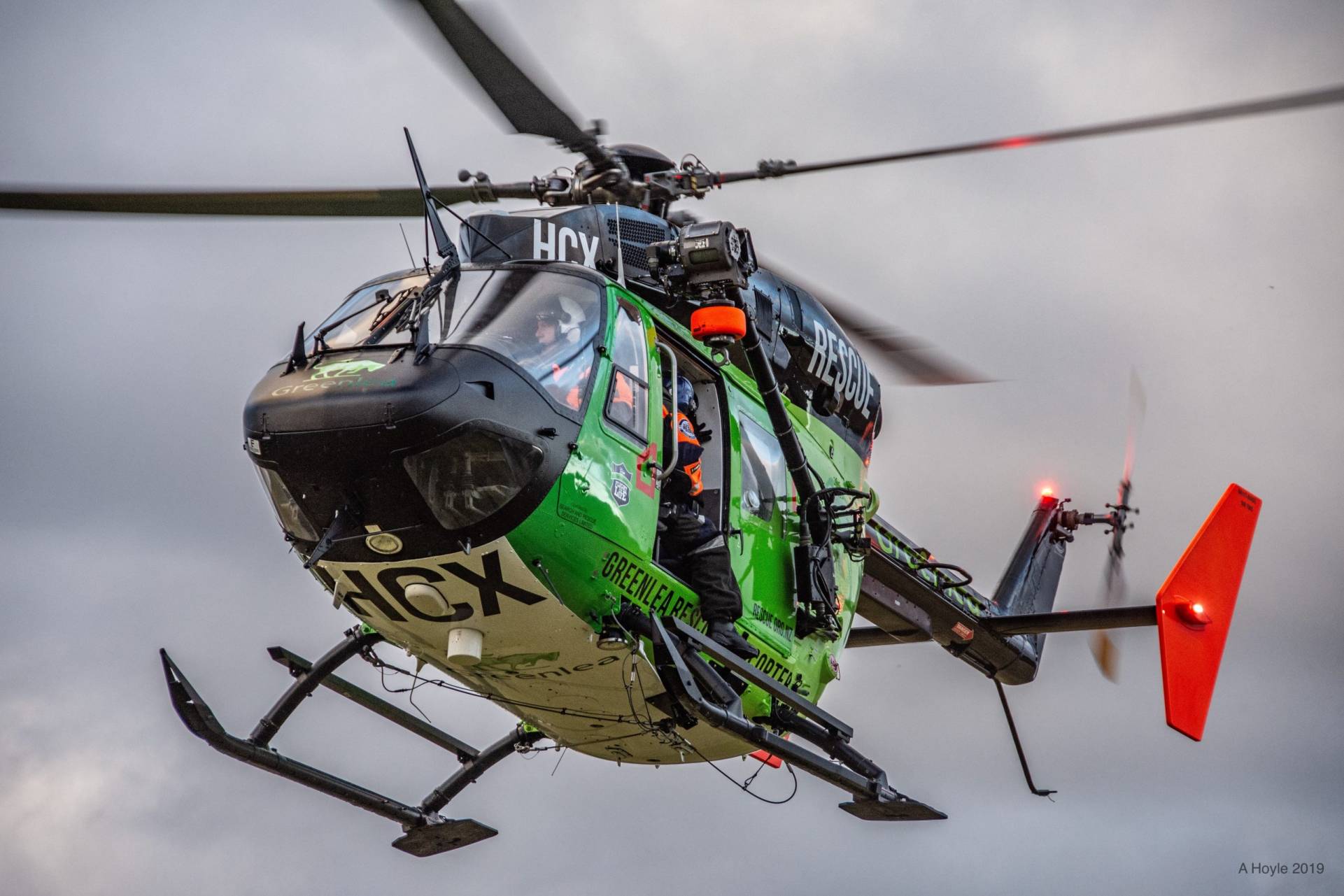


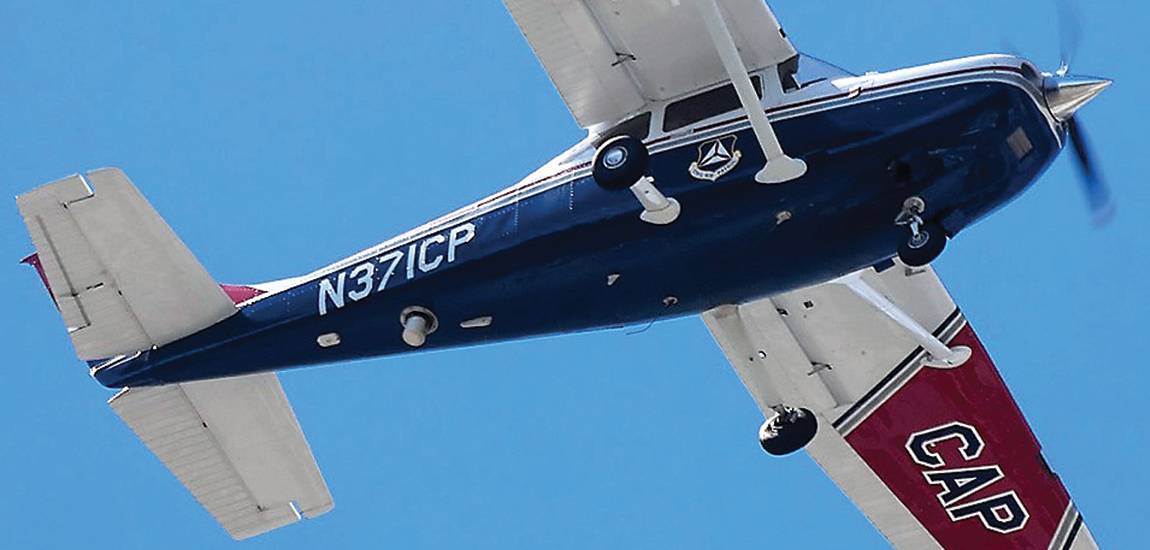
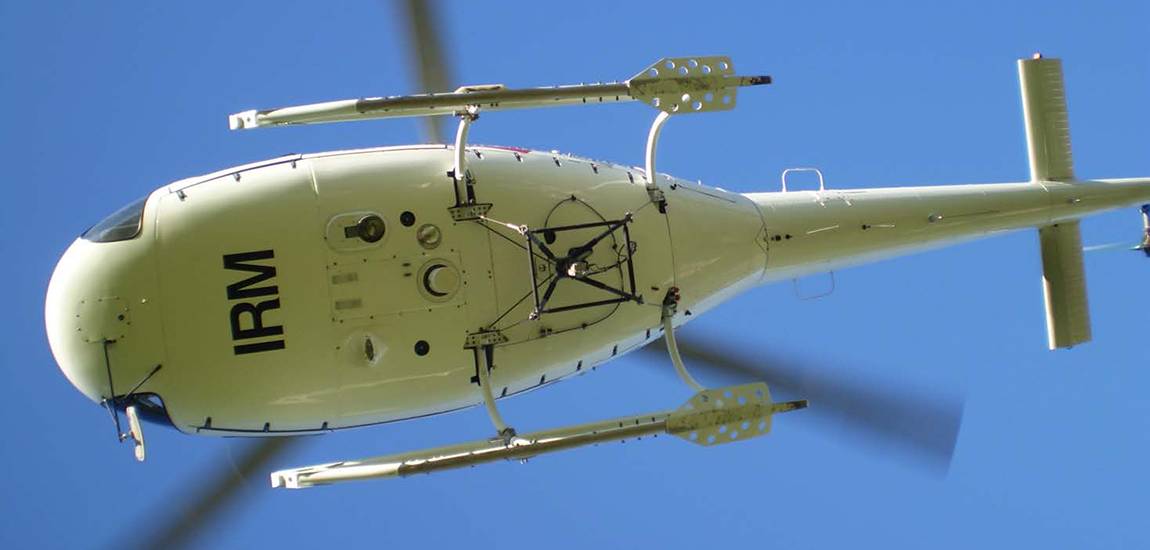
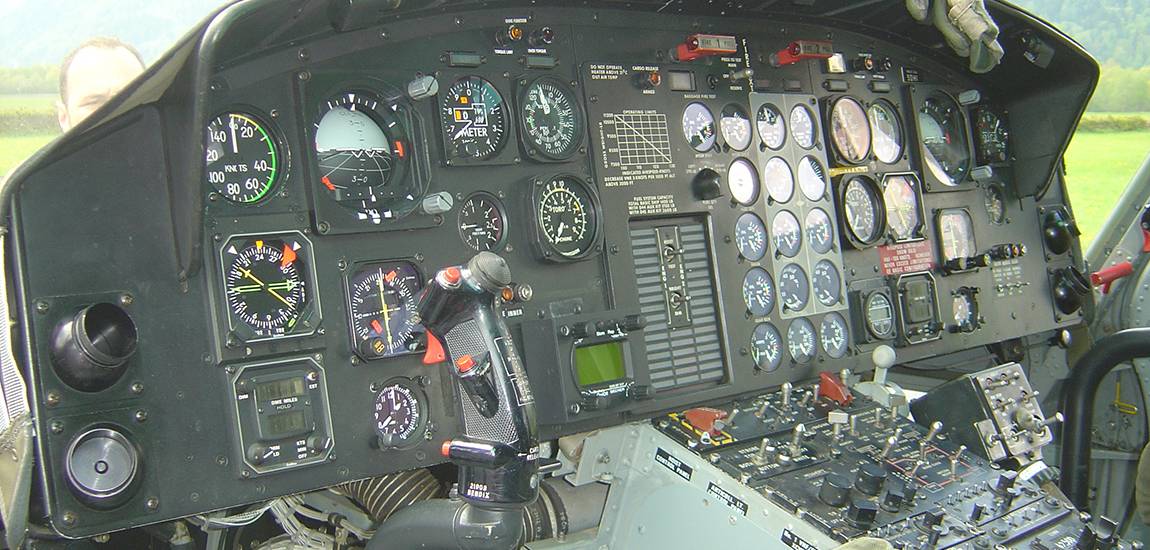
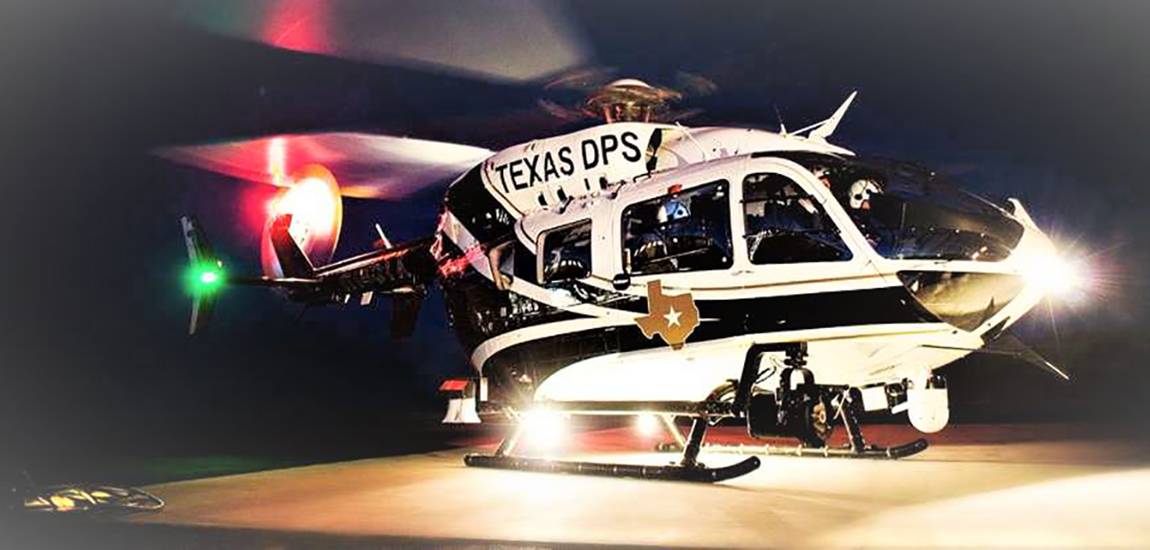

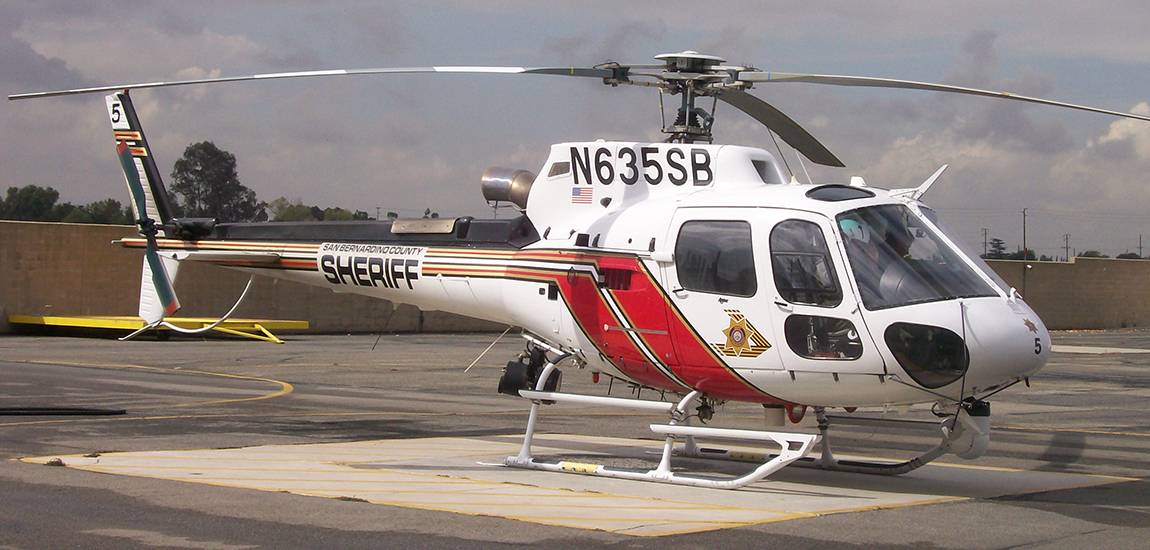
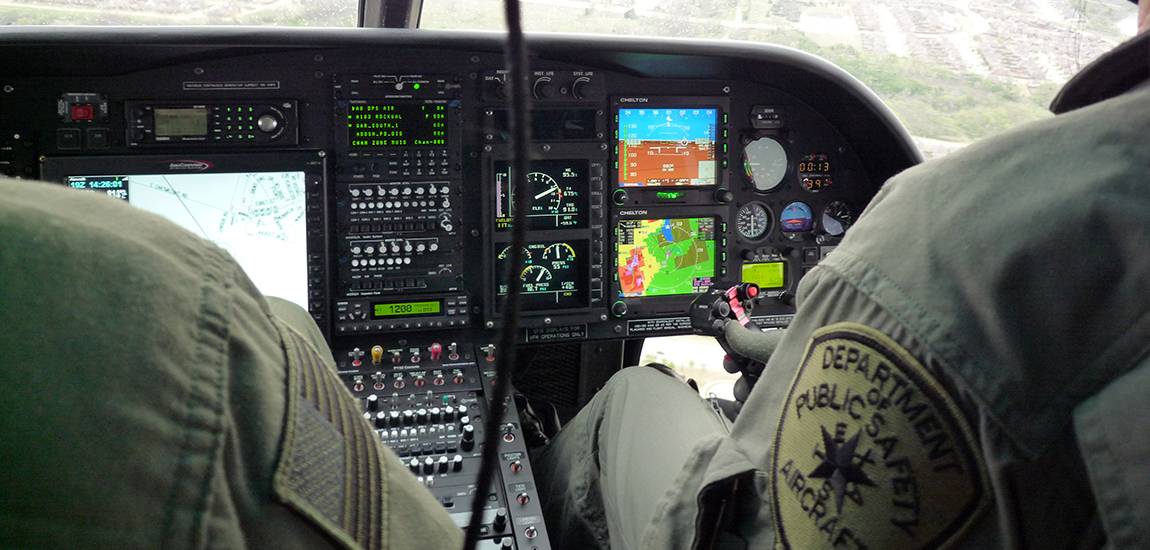


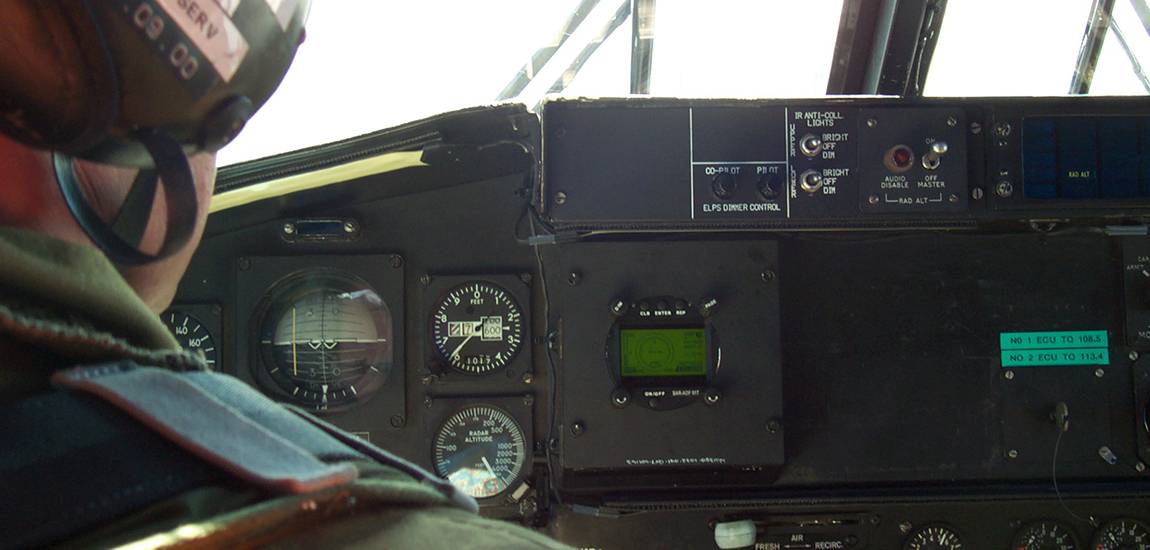
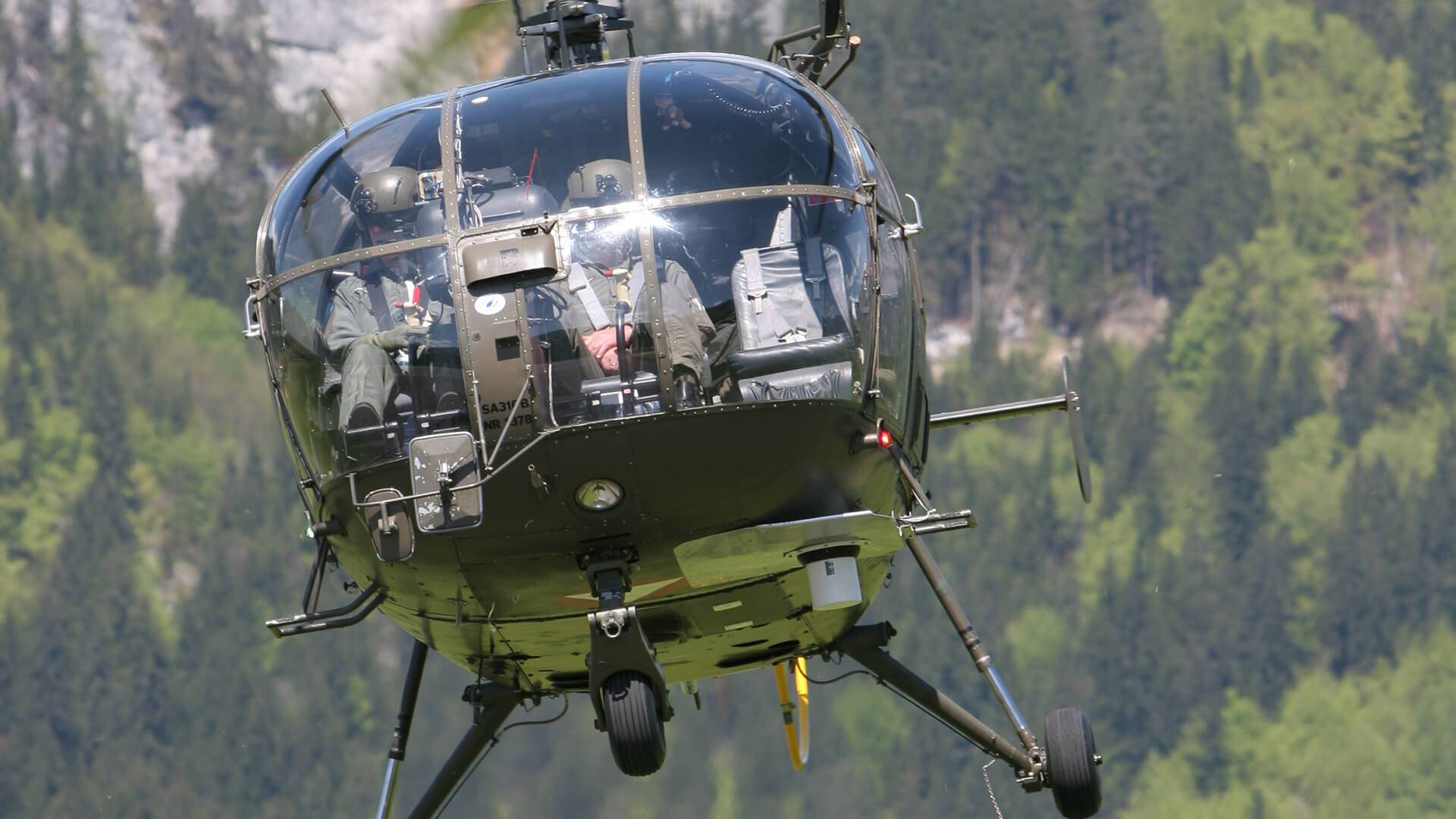

















Latest News
Testimonials
Software Revision
Display Control Unit: 3.15 - 3.20
Antenna Unit: 3.11 - 3.24
Dates Active
2008 - 2013
The RT-600's second generation marks a significant evolution in the realm of radio direction finders, amplifying its dedication to Search and Rescue (SAR) missions. While retaining its compact footprint, this updated model expands its frequency coverage from 118MHz to 406MHz, accommodating additional frequencies that broaden its detection range. Additionally, users will appreciate a more intuitive and refined graphical interface that simplifies operations. Regardless of the aircraft type—be it fixed-wing or rotary-wing—the RT-600's energy efficiency and compact design ensure seamless integration.
As the "Standard" or RT-600-A version, it stands out in its prowess for SAR endeavors. The device adeptly calculates the Line of Bearing (LOB), directing operators towards the origin of emergency signals. Within its broad frequency spectrum from 118MHz to 470MHz, the RT-600-A showcases its versatility, effortlessly detecting, demodulating, and decoding a variety of signal types, including AM, FM, PM, and CW transmissions. This robust capability ensures that emergency transmissions are neither missed nor misinterpreted, affirming its status as a vital tool in rescue operations.
Features
Specifications
gallery
News & testimonials
downloads
COSPAS-SARSAT Ready
The RT-600 easily decodes of incoming COSPAS-SARSAT beacons messages. Users can track beacons in VHF by switching to 121.500 MHz while in COSPAS-SARSAT DF Mode, and if no valid signal is received, they can switch back to the last active COSPAS-SARSAT channel at 406 MHz. In COSPAS-SARSAT Scan Mode, the RT-600 scans manually selectable channels and stops at the received frequency, allowing for fast scanning of the complete sub-band and detection of receivable signals within one repetition cycle.


Fine-Tune Frequencies with Ease
The frequency selection page is designed to assist pilots in easily choosing frequencies. It features user memory slots for quick access to frequently used frequencies. The frequency scale is organized into different blocks. These blocks include Law Enforcement scanning frequencies (exclusive to the Law Enforcement version), Memory Channels, Fix pre-programmed frequencies, COSPAS-SARSAT frequencies, and COSPAS-SARSAT scanning frequencies. This intuitive interface allows pilots to efficiently select the desired frequencies quickly.
System Characteristics
Method of Bearing | Doppler principle (3 kHz rotational frequency, right/left rotation) | ||||||||||
Bearing Accuracy | ±5° RMS | ||||||||||
Internal Resolution | 1° | ||||||||||
Bearing Sensitivity |
| ||||||||||
Frequency Stability | ±2.0 ppm (Δf/f = ±2·10-6) [at Temperature range –30 °C…+80 °C] | ||||||||||
Reception Frequencies |
| ||||||||||
Additional Frequency Options |
| ||||||||||
Special Scanning Modes | Complete Maritime Ship Band Scanning within 3 sec | ||||||||||
COSPAS-SARSAT Frequencies | Channels A to S (406.022 to 406.076MHz) | ||||||||||
COSPAS-SARSAT Fast Scan Mode | Full automatic detection of any active COSPAS-SARSAT channel A…S within 400 msec | ||||||||||
COSPAS-SARSAT Decoding | Reception and decoding of COSPAS-SARSAT data signal (112 or 144 bit, 400 baud, | ||||||||||
Bearable kinds of Modulation | A3E, F3E, A2X (ELT-modulation), F1D, G2D, COSPAS-SARSAT bearing largely independent of modulation | ||||||||||
Polarization | Vertical | ||||||||||
Error of Polarization | ≤5° at 60° field vector rotation | ||||||||||
Garbling Cone | 30° to the vertical | ||||||||||
Time of response | ≤ 20 ms (with sufficient receiving field strength) | ||||||||||
LC-graphic display | 128 x 64 dots, supertwist / transflective, extended range of temperature, dark-blue display on yellow-green background, background light. Freely adjustable (exponential) dimming of brightness | ||||||||||
NVG cockpit design | Fully compatible NVIS Green B display Control Unit optional | ||||||||||
Operating voltage | 27.5 V nominal / 12 to 35 V DC | ||||||||||
Current consumption |
| ||||||||||
Audio out | External speaker approx. 2 W (4 Ω) | ||||||||||
Interface | Serial interface RS-232 (9600 baud, 8 data bits, 1 stop bit, no parity) |
Mechanical Characteristics

Header | Display Control Unit | Antenna Unit |
|---|---|---|
Weight | 250 g | 2000 g |
Dimensions | 82 mm x 82 mm x 43 mm | Ø 270 mm x 185 mm |
Operating temperature | -20°C to +60°C | -40°C to +60°C |
Storage temperature | -30°C to +80°C | -55°C to +80°C |
Ingress protection | Cell | IP67 |








































Latest News
Testimonials
Software Revision
Display Control Unit: 2.XX
Antenna Unit: 2.XX
Dates Active
2000 - 2008
The RT-500, sometimes referred to as "BECKER SAR DF-517", Direction Finding System is a state-of-the-art solution that fulfills all current SAR requirements and is designed to meet future demands until 2010. It consistently exceeds customer expectations for acquisition and range capabilities, accurately capturing transmitting SAR beacons over distances of more than 100 km at an altitude of 10,000 feet. The system has been successfully demonstrated using frequencies such as 121.5MHz, 156.8MHz, 243MHz, and 406MHz, complying with international COSPAS-SARSAT regulations and capturing all emergency frequencies and beacons worldwide. The system consists of a hermetically sealed unit that integrates the receiver and antenna, suitable for installation on helicopters or fixed-wing aircraft.
The system's advanced technology, including the patented antenna concept and sophisticated bearing analyzing algorithms, enables excellent bearing results. It is available in two versions: the standard version for traditional emergency frequencies in the UHF and VHF band, as well as maritime distress calling channel 16 and COSPAS/SARSAT signals, and the Law Enforcement version that includes VHF emergency frequency, COSPAS/SARSAT signals, and additional LE-signals such as LoJack, ETS, and Med-track.
The RT-500 can effectively detect the 406MHz pulse generated by an emergency beacon, even though the pulse lasts only 450 milliseconds and occurs every 50 seconds, a challenging task for conventional Direction Finder systems. It automatically scans for other emergency frequencies between the 406MHz pulses and can also be used for training purposes at 406.025MHz. The SAR DF-517 has demonstrated its ability to accurately isolate individual beacon transmissions within a small search area, even when multiple beacons are active, such as in the case of multi-crewed aircraft equipped with Locator beacons. It can integrate with BECKER's integrated or mobile moving map displays, providing visual indication of survivors as targets and guiding SAR crews with the necessary track to reach the indicated position.
The BECKER SAR DF-517 Direction Finding System supports the complete COSPAS/SARSAT Frequency range, including future channels, and offers a fast scanning mode for rapid detection of any possible COSPAS/SARSAT frequency within one pulse period (less than 400 ms). Its reliable performance and advanced features make it an ideal choice for professional SAR and Law Enforcement purposes.
Features
Specifications
gallery
News & testimonials
downloads
COSPAS-SARSAT Decoding Built-in
The RT-600 COSPAS-SARSAT decoding allows for the decoding of incoming COSPAS-SARSAT data messages. It provides various information such as the COSPAS-SARSAT Country Code, the time since the last message was received, encoded GNSS position data (if available), the range of covered COSPAS-SARSAT channels, the 15-HEX-ID of the beacon, and the data string containing the decoded bits of the data burst.


Training Mode
The SAR DF-517, apart from its primary search and rescue functionalities, offers a versatile training capability. It can be utilized for training purposes, specifically set to operate at the frequency of 406.025MHz. This feature allows organizations and personnel involved in search and rescue operations to simulate and practice emergency scenarios in a controlled environment. By setting the SAR DF-517 to the training frequency, users can familiarize themselves with the system's operation, practice signal detection, direction finding, and range determination techniques, and refine their skills in handling emergency situations. This training capability enhances preparedness and proficiency, enabling SAR teams to effectively respond to real-life emergencies with confidence and expertise.
System Characteristics
Method of Bearing | Doppler principle (3 kHz rotational frequency, right/left rotation) | ||||||||||
Bearing Accuracy | ± 5° RMS | ||||||||||
Internal Resolution | 1° | ||||||||||
Bearing Sensitivity |
| ||||||||||
Frequency Stability | ± 2.0 ppm (Δ f/f = ± 2 *10 -6) [at temperature range - 20 °C…+ 60 °C] | ||||||||||
Reception Frequencies (Emergency Mode) |
| ||||||||||
Reception Frequencies (Training Mode) |
| ||||||||||
Scanning mode | When receiving Cospas/Sarsat signals additionally the emergency frequencies 121.500 MHz and 243.000 MHz can be scanned | ||||||||||
Cospas/Sarsat analys | Reception and analysis/decoding of Cospas/Sarsat data signal (112 resp. 144 bit, 400 baud, biphase L-phase modulated, error test / specified according to Cospas/Sarsat C/S T.001 October 1999) | ||||||||||
Bearable kinds of modulation | A3E, F3E, A2X (ELT-modulation); bearing largely independent of modulation | ||||||||||
Polarisation | Vertical | ||||||||||
Error of polarisation | ≤ 5° at 60° field vector rotation | ||||||||||
Garbling cone | 30° to the vertical | ||||||||||
Time of response | ≤ 50 ms (with sufficient receiving field strength) | ||||||||||
LC-graphic display | 128x64 dots, supertwist /transflective, extended range of temperature, dark-blue display on yellowgreen background, lit up. Free adjustable (exponential) dimming of brightness | ||||||||||
Supply voltage range | 12 V to 35 V DC | ||||||||||
Current consumption |
| ||||||||||
Audio | AC coupled voltage source with very low inner resistance. Max. output voltage ca 8Vpp = 2.83VRMS at Volume Max. output power 2W with 4Ω speaker. | ||||||||||
Mechanical Characteristics

Header | Display Control Unit | Antenna Unit |
|---|---|---|
Weight | 250 g | 2000 g |
Dimensions | 82 mm x 82 mm x 43 mm | Ø 270 mm x 185 mm |
Operating temperature | -20°C to +60°C | -40°C to +60°C |
Storage temperature | -30°C to +80°C | -55°C to +80°C |
Ingress protection | Cell | IP67 |








































Latest News
